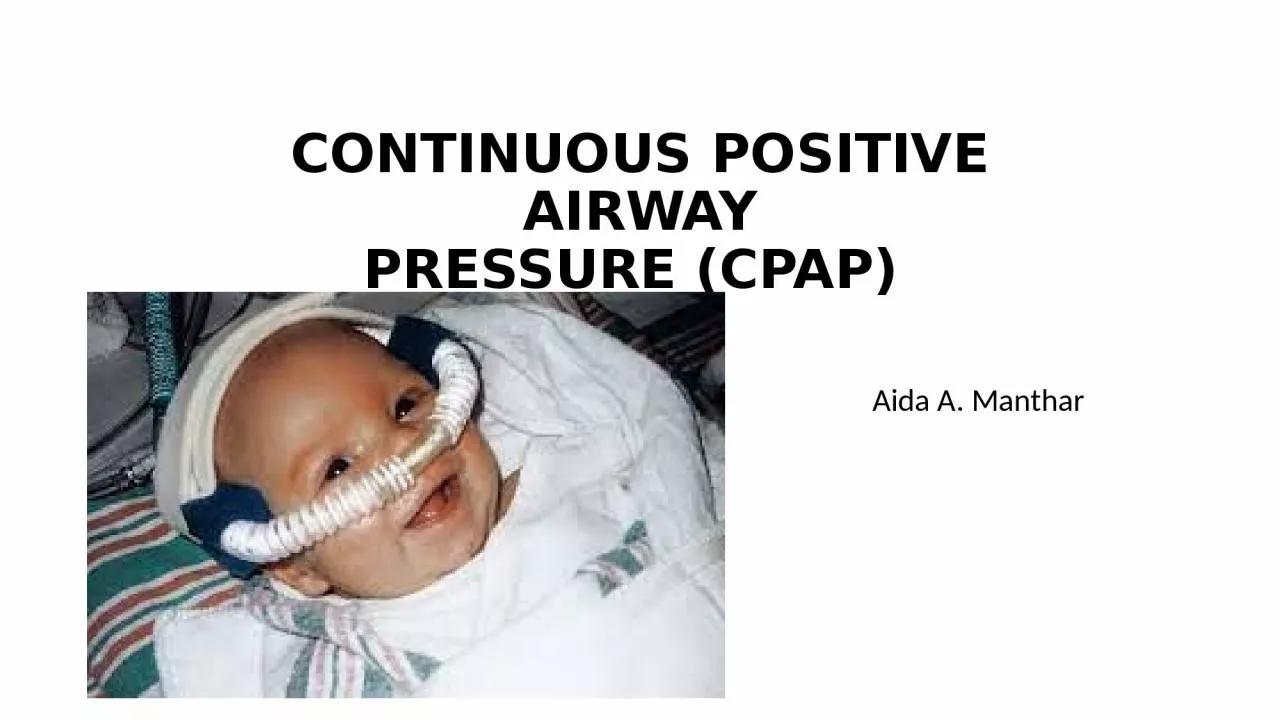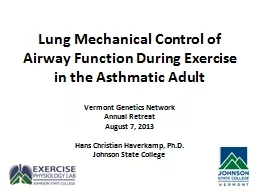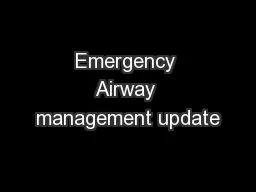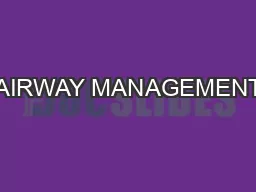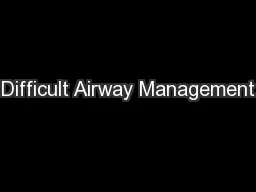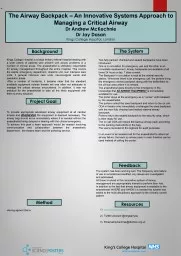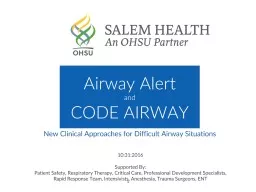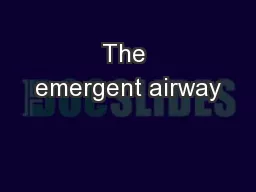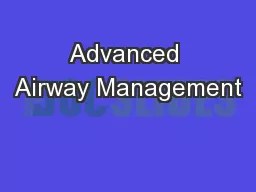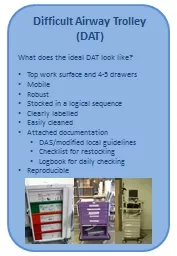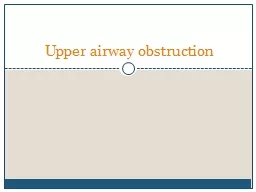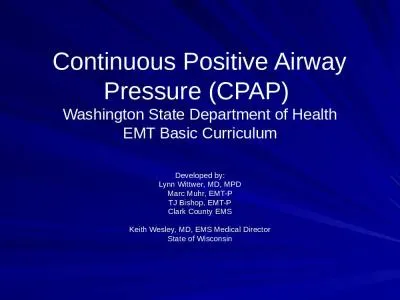PPT-CONTINUOUS POSITIVE AIRWAY
Author : osullivan | Published Date : 2024-01-29
PRESSURE CPAP Aida A Manthar DEFINITION Noninvasive respiratory support utilizing continuous distending pressure during inspiration and expiration in
Presentation Embed Code
Download Presentation
Download Presentation The PPT/PDF document "CONTINUOUS POSITIVE AIRWAY" is the property of its rightful owner. Permission is granted to download and print the materials on this website for personal, non-commercial use only, and to display it on your personal computer provided you do not modify the materials and that you retain all copyright notices contained in the materials. By downloading content from our website, you accept the terms of this agreement.
CONTINUOUS POSITIVE AIRWAY: Transcript
PRESSURE CPAP Aida A Manthar DEFINITION Noninvasive respiratory support utilizing continuous distending pressure during inspiration and expiration in . Bill . Howie. DNP, CRNA. University of Maryland Medical Center/Shock Trauma Center. Uniformed University of the Health Sciences. Catholic University of America. 08 March 2014 MANA . Following this presentation the participant will:. Vermont Genetics Network. Annual Retreat. August 7, 2013. Hans Christian . Haverkamp. , Ph.D.. Johnson State College. Search Google for “Biomedical Research”. Research in the Exercise Physiology Lab. Carrie de Moor, MD. Associate Medical Director/ED Trauma Director . JPS Health Network. 4/21/2012. Objectives. Recognize potential difficult airways. Review Techniques for Advanced Airway Management. by Denny Clishe EMT-BIV. and Ron Peters RN. AGENDA. Airway anatomy and function. Airway adjuncts. King Tube. ET Tube. Advanced and difficult airways. AIRWAY ANATOMY. UPPER AIRWAY. LOWER AIRWAY. AIRWAY MANAGEMENT. Airway management is really easy….. Except when it isn’t. DEFFINATION. Difficult Intubation is:. Failure to intubate with conventional laryngoscopy after an optimal/best attempt with:. Reasonable experienced . . Dr Andrew . McKechnie. Dr. . Jay Dasan. Kings College Hospital, London. Background. Kings . College Hospital is a large tertiary referral hospital dealing with a wide variety of patients who present with airway problems in a number of clinical areas. and. CODE AIRWAY. New Clinical Approaches for Difficult Airway Situations. 10:31:2016. Supported By: . Patient Safety, Respiratory Therapy, Critical Care, Professional Development Specialists, Rapid Response Team, Intensivists, Anesthesia, Trauma Surgeons, ENT. Wes Johnson, MSPAC, PA-C, CPAAPA. Regional Director of Clinical Education . –. IMM Huntsville Division. Department of Emergency Medicine. Background. Former RT at Children’s Hospital and St. Vincent’s Hospital. Upper airway. Nasal passage. Turbinates. Oral . cavity. Epiglottis. Vocal cord. Esophagus. Anatomy of the Glottis. Posterior tongue. Epiglottis. Vocal cords. True. False. Esophagus. Prehospital . care providers . University of Colorado Medical School. Rural . Track. 2013. Advanced Airway Management. Basic Airway Management. Airway Suctioning. Oxygen Delivery Methods. Laryngeal Mask Airway. ET Intubation. Oropharyngeal. (DAT). What does the ideal DAT look like?. Top work surface and 4-5 drawers. Mobile. Robust. Stocked in a logical sequence. Clearly labelled. Easily cleaned. Attached documentation. DAS/modified local guidelines. BLS CPAP Continuous Positive Airway Pressure Objectives Why CPAP? Respiratory A&P Review How does CPAP work? Indications Contraindications CPAP Methods What is CPAP? C ontinuous P ositive A irway It is one of the most serious emergency situation. Early diagnosis and followed restoration of airflow is essential to prevent cardiac arrest or irreversible brain damage that occurs within minutes of complete airway obstruction. Washington State Department of Health. EMT Basic Curriculum. Developed by:. Lynn Wittwer, MD, MPD. Marc Muhr, EMT-P. TJ Bishop, EMT-P. Clark County EMS. Keith Wesley, MD, EMS Medical Director. State of Wisconsin.
Download Document
Here is the link to download the presentation.
"CONTINUOUS POSITIVE AIRWAY"The content belongs to its owner. You may download and print it for personal use, without modification, and keep all copyright notices. By downloading, you agree to these terms.
Related Documents

